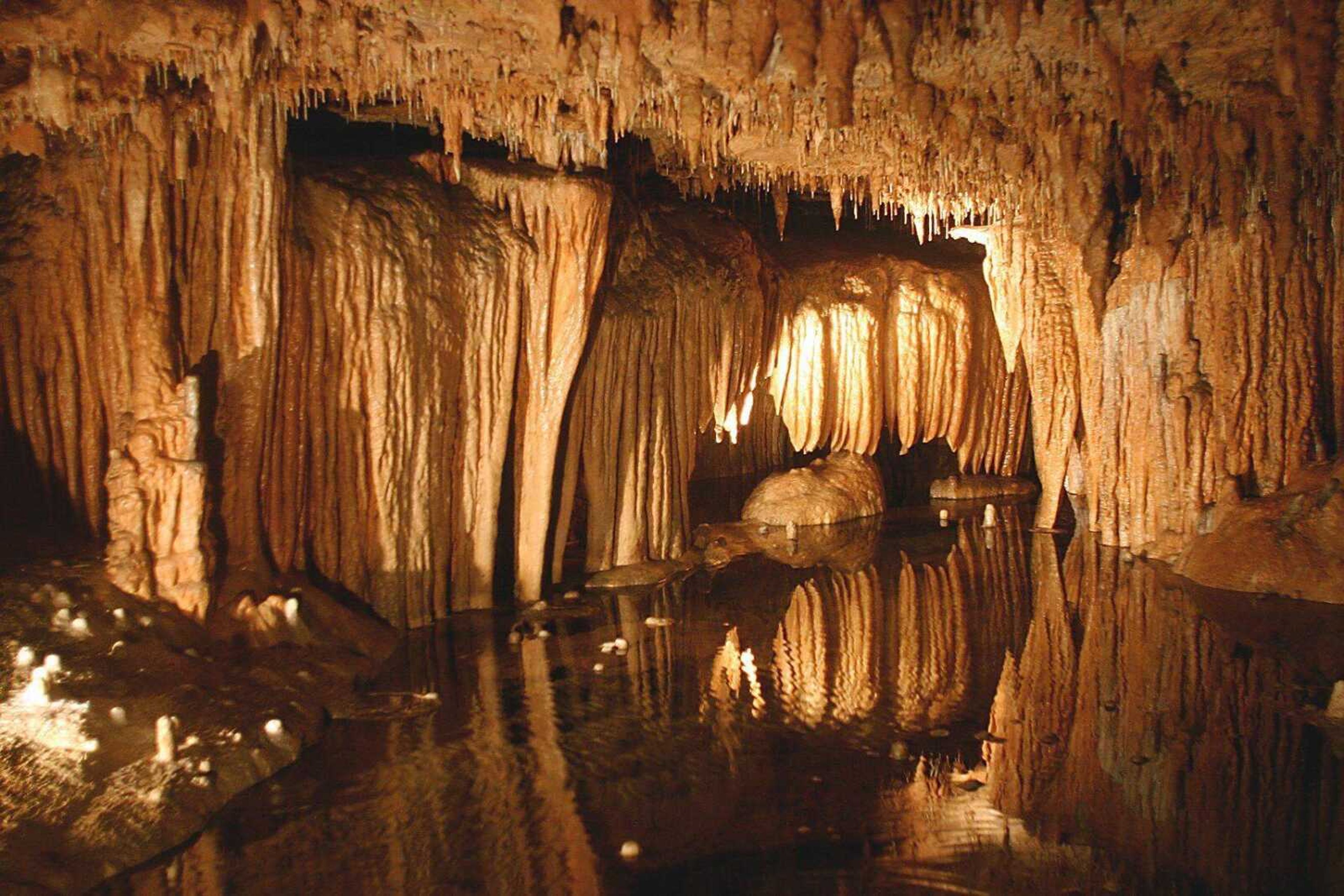Bats find a home in Mo. state parks
LEASBURG, Mo. -- You don't have to go far to find bats at Onondaga Cave State Park. Just inside the interior glass doors that lead into one of America's most spectacular caves, a dozen or so tiny balls of dark fur clustered together on the ceiling a few feet above visitors' heads...
LEASBURG, Mo. -- You don't have to go far to find bats at Onondaga Cave State Park.
Just inside the interior glass doors that lead into one of America's most spectacular caves, a dozen or so tiny balls of dark fur clustered together on the ceiling a few feet above visitors' heads.
"Those are little brown bats and eastern pipistrelles, which are also called tricolored," said Tara Flynn, a naturalist with the Missouri Department of Natural Resources.
"We did a survey last November and had about 800 bats that could be seen easily," she said. "But I would think we'd have about twice that number. This could be deemed a significant bat cave."
Most caves in Missouri state parks and historic sites have been closed temporarily to the public in an effort to reduce the risk of spreading a disease affecting bats called white-nose syndrome. The fall wild cave tours through Devil's Icebox Cave in Rock Bridge Memorial State park near Columbia, Mo., also have been canceled.
However, the park system's four major public tour caves have remained open with certain precautions.
Visitors who show up to tour Onondaga Cave and Cathedral Cave at Onondaga Cave State Park, Fisher Cave at Meramec State Park and Ozark Caverns at Lake of the Ozarks State Park are greeted with some gentle questioning.
"We ask people if they've visited any other caves," said Maria Potter, site superintendent at Onondaga. "If they've been in caves in areas affected by the disease, we ask more questions."
First found in New York in 2006, white-nose syndrome has since spread to several states, killing an estimated one million bats. Bats from three locations in Missouri -- none of them in state parks -- tested positive for the fungus, prompting the closure order issued in May for most state caves.
A link in the chain of life
Bats are important because of their natural role in consuming night-flying insects such as moths and mosquitoes. Gray bats alone eat an estimated 540 tons of insects per year in Missouri, which translates to some 223 billion bugs.
Bats are also an integral part of the overall ecological system of a cave. Onondaga Cave, for example, boasts 68 known species, from tiny invertebrates to grotto salamanders. Bat guano, and their decomposing carcasses, provides nutrients for that chain of life.
With some 6,300 caves, including at least 175 in 18 state parks, Missouri earned the nickname as the Cave State. The Ozarks, where most of the caves are located, is known for its karst geology, in which mildly acidic groundwater moves through soluble bedrock, leaving a subterranean maze of caves and fissures.
The result, at Onondaga, is an underground labyrinth with 1.5 miles of passages decorated with fantastical deposits like the Twins, the King's Canopy and the Rock of Ages. The Lily Pad Room, alone, is worth the price of admission, which is $12 for adults and $7 for children 6 to 12.
The tours follow a paved walkway, lined by railing, while guides explain the geology and human history of the cave, which began in 1886 when the first explorers entered by boat.
The Big Room is 80 feet tall from the surface of the spring that runs through the cave to the ceiling, which is decorated with tiny black dots hanging amid the stalactites.
"Hear that?" asked Potter, who joined Flynn on the tour. "He's letting you know he knows you're here. It's amazing the kind of different calls bats have."
Feuding families
Onondaga Cave has electric lights, which guides turn off and on as you move through to cause the least disturbance. The tours cover about a mile in 75 minutes.
Touring a cave is a cool experience, especially during the heat and humidity of summer. Cave temperatures are around 57 degrees year-round. The four tour caves are open from early spring through October. The caves are closed during winter, when the bats hibernate.
Guides at Onondaga customize their talks to their customers. If visitors seem interested in the geologic aspects of a cave, the talk may center around how the deposits are formed over eons. A younger group may hear more about the human history of the cave, including a feud between two families that strung barbed wire to separate the portions they owned.
Onondaga Cave State Park also offers tours of Cathedral Cave, which is on the other side of the Meramec River Valley. "It's different," Potter, the park superintendent said of Cathedral. "They each have their own significant features."
The tours of Cathedral, Fisher and Ozark Caverns have another significant difference from Onondaga Cave. Those three are not illuminated by lights; visitors carry electric lanterns.
"People seem to enjoy the lantern tours at Ozark Caverns because it's like exploring the cave on their own," said Cindy Hall, naturalist at Lake of the Ozarks State Park. "You put lights in a cave, you tend to get algae. We don't have that problem. It's better for the bats."
Connect with the Southeast Missourian Newsroom:
For corrections to this story or other insights for the editor, click here. To submit a letter to the editor, click here. To learn about the Southeast Missourian’s AI Policy, click here.









